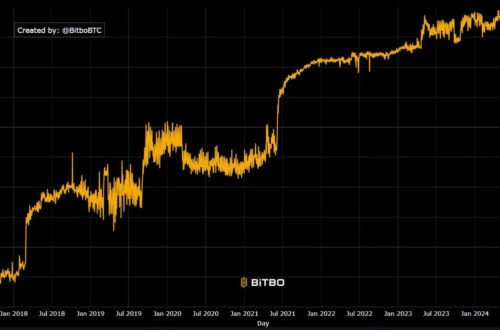
BlackRock and Fidelity Investment’s spot Bitcoin ETFs — IBIT and FBTC — have become the most popular funds the two asset managers currently offer in less than 50 days of trading, based on data shared by Bloomberg ETF analyst Eric Balchunas.
IBIT and FBTC were launched on Jan. 11 and have consistently posted record-setting numbers and generally outperformed the wider ETF market. The strong performance is evidence of Bitcoin’s growing popularity in traditional financial circles.
49-day streak
According to the data, IBIT made up more than half of BlackRock’s net inflows for the year despite the company’s large portfolio of 420 ETFs. The Bitcoin fund has attracted double the capital of every other ETF offered by the company since its launch in January.
Similarly, FBTC accounted for 70% of Fidelity’s YTD flows, attracting 5x more capital than any other ETF in the company’s lineup. These figures highlight the significant role these ETFs play in attracting investor capital.
Balchunas also highlighted that the two spot Bitcoin ETFs have also achieved a notable milestone by securing continuous cash inflows for 49 consecutive days, a rare achievement in the ETF market.
This achievement places them fourth among active streaks, trailing only behind $COWZ and $CALF — which have seen over 100 days of continuous inflows, and $SDVY.
The sustained inflows into IBIT and FBTC indicate growing investor interest and confidence in these ETFs. Such consistent performance is exceptional, with only 30 other ETFs ever having achieved a similar streak of inflows and none from their launch like the two funds have.
ETF hodlers?
Recent discussions have focused on ETF investor behavior, especially during market dips. Despite perceptions of ETF investors withdrawing during downturns, the actual movements in the market present a different picture.
Balchunas challenged recent assertions in the community that ETF investors lack sophistication or resilience. He noted that the Newborn Nine collectively received about $1.2 billion over the past five days, even as Bitcoin prices fell by 8%.
This inflow contradicts the idea of mass withdrawals from Bitcoin-related ETFs and indicates strategic investment choices by ETF investors.
Balchunas further clarified that while $GBTC experienced outflows, these actions primarily involved strategic exchanges by Genesis and did not signify a broader lack of confidence among ETF investors.
In fact, these movements were largely neutral in impact. He also pointed to historical data supporting the resilience of ETF investors. In 2008, ETFs attracted $167 billion in inflows when the S&P 500 was down by 35%.
Similarly, in 2021, despite an 18% drop in the S&P 500, ETFs drew another $600 billion. These events highlight the strategic patience and confidence of ETF investors across various market conditions.
Mentioned in this article





